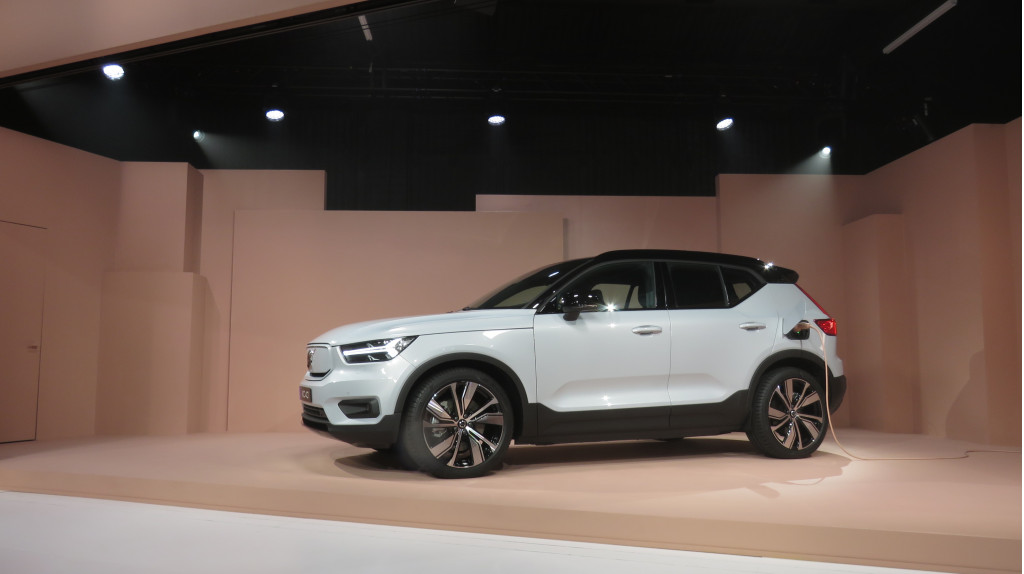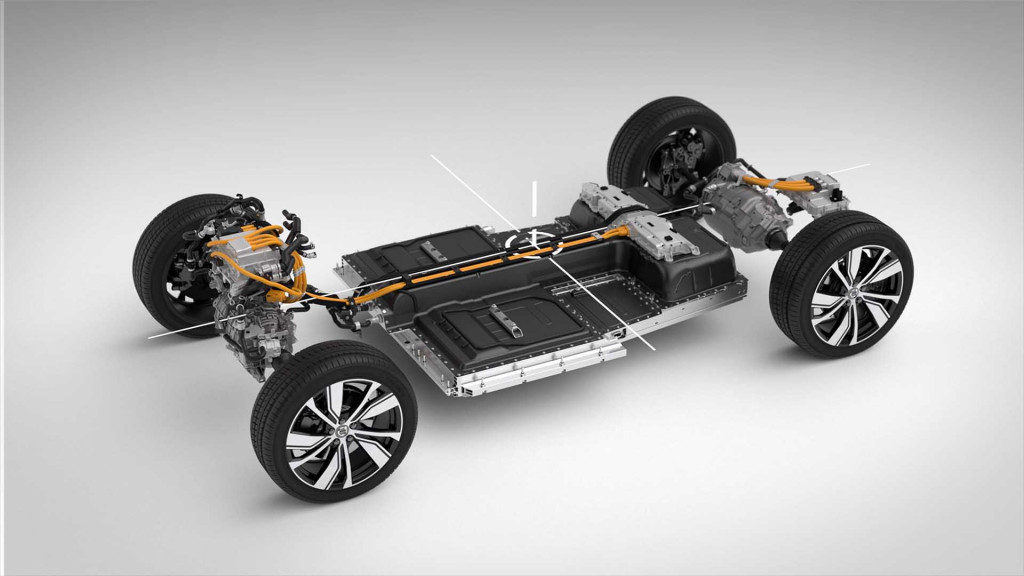Volvo announced Thursday that production of its first fully electric vehicle, the XC40 T8 Recharge, has started in Ghent, Belgium.
The electric SUV is bound for the U.S. starting late this year, and in terms of pricing, performance, and packaging, it’s shaping up to be one of the closest rivals yet to the Tesla Model Y.
Volvo Cars North America told Green Car Reports and a group of journalists Thursday that while demonstration cars are likely to arrive at many dealerships in December, first deliveries won’t likely start until January.

2021 Volvo XC40 Recharge P8 - Los Angeles reveal, October 2019
Revealed last October, the 2021 Volvo XC40 Recharge final specs and pricing have yet to be confirmed for the U.S.
The Recharge was engineered and developed concurrently with the Polestar 2 by the same Volvo-led engineering teams in Sweden, and with the same designer, Thomas Ingenlath.
Both models have 78-kwh (75-kwh usable) battery packs configured into a ‘T’ under the back seat and drive tunnel, plus front and rear 150-kw motors. Volvo promises a 0-60 mph time of 4.7 seconds for the 402-hp dual-motor vehicle, as well as an expected range of more than 200 miles.

2021 Volvo XC40 Recharge
The XC40 Recharge can fast-charge at 150 kw, allowing a charge to 80% in about 40 minutes. At launch, the Android-based, Google-supported navigation system will have the capability to use energy consumption and the battery’s state of charge to suggest DC fast-charging stops along the route, modifying the arrival time based on the anticipated length of the charge stop.
Volvo confirmed that in U.S. spec the XC40 Recharge will come with a heat pump and other cold-weather features that correspond with its offering across the U.S., not just in California emissions states.
Volvo opened U.S. pre-orders for the XC40 Recharge back in January, and it’s reportedly sold out the first year of production based on the number of fully refundable $1,000 pre-orders it’s received. In the absence of exact pricing, Volvo has said the Recharge will cost about $55,000, or roughly $48,000 when factoring in the destination fee and eligibility for the $7,500 EV tax credit.
The company plans to introduce one fully electric model each year until 2025, with aims to make fully electric vehicles half of its global sales by 2025, with the remainder hybrids. It concedes that its proportion of EVs likely won’t be quite that high for the U.S. market.
